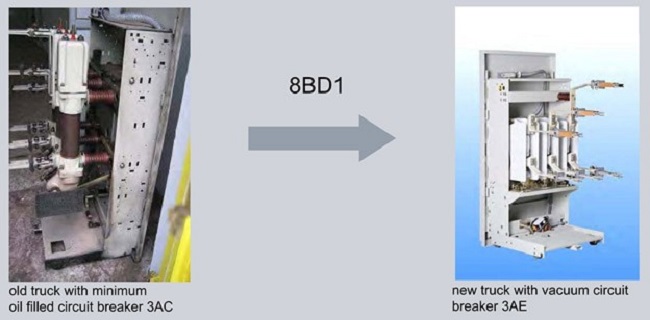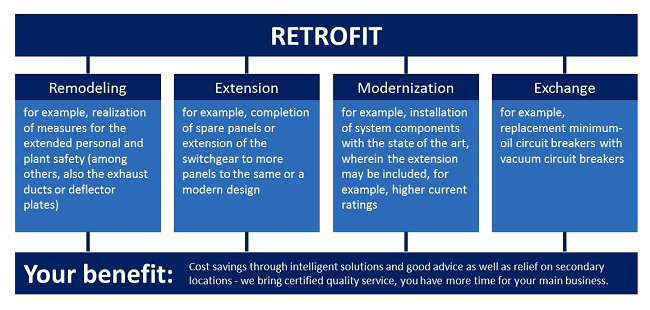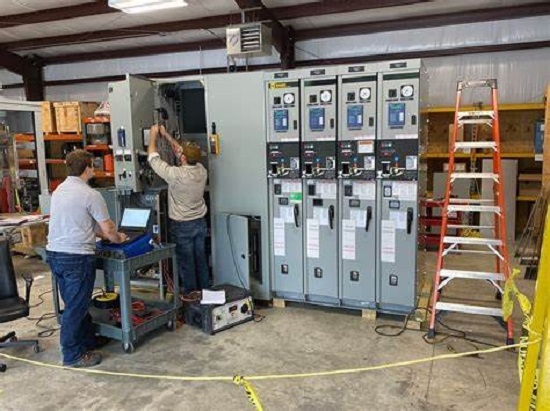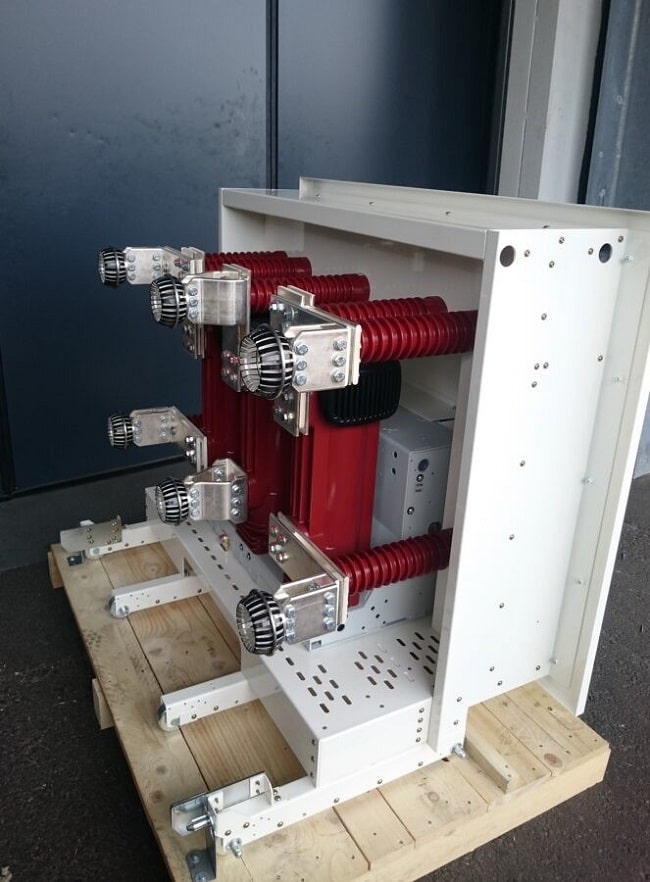
Retrofit of Medium Voltage Switchgear is the process of upgrading or replacing existing electrical equipment with new components to improve safety, reliability, and performance. Switchgear is a crucial component of electrical distribution systems, and retrofitting can help extend the life of aging switchgear while ensuring it meets current safety and performance standards.
1. Introduction to Medium Voltage Switchgear
2. The Need for Retrofitting Medium Voltage Switchgear
2.1 Ageing and Obsolete Equipment
2.2 Advancements in Technology
2.3 Regulatory Compliance
3. Understanding Medium Voltage Switchgear Retrofit
4. Steps in Retrofitting Medium Voltage Switchgear
4.1 Initial Assessment
4.2 Retrofit Design
4.3 Implementation
5. Understanding Medium Voltage Switchgear Wiring
5.1 The Importance of Correct Wiring in Medium Voltage Switchgear
5.2 Common Challenges with Wiring
6. Considerations in Retrofitting the Wiring of Medium Voltage Switchgear
6.1 Safety Considerations
6.2 Compatibility with Existing Systems
6.3 Future Expansion Plans
7. The Role of Technology in Medium Voltage Switchgear Retrofitting
8. Benefits of Retrofitting Medium Voltage Switchgear
9. Potential Pitfalls in Retrofitting Medium Voltage Switchgear and How to Avoid Them
10. Medium voltage circuit breaker retrofit advantage(Vacuum CB)
11. Conclusion
Retrofitting is a reliable solution that guarantees protection from electrical flash hazards and other accidents without the outrageous costs of replacing the entire switchgear panel. This provides the trouble-free durability you would expect from a brand-new switchgear panel.
A typical retrofit solution involves the replacement of old circuit breakers with modern vacuum circuit breakers. The retrofit solution comprises a new circuit breaker, frame or chassis, isolators, and steelwork to be installed according to the installation manual. The components of the retrofit kit match the dimensions of the frame and busbars. Which allows the installation to be carried out with no modifications to the design of the switchboard.
Since the retrofit solution to be implemented is based on the standard retrofit kit, it only takes a few hours to do the installation.
Retrofitting can extend the life expectancy of current assets by 30 years (dependent on the switchgear panel’s condition) with minimal disruption:
You can find more information in this FAQ: FAQ About Medium Voltage Switchgear Retrofit for Electrical Engineers and Students
Introduction to Medium Voltage Switchgear
Switchgear is an essential part of any electrical power system, providing essential protection against electrical faults and abnormalities. Medium voltage switchgear, which handles voltages between 1kV and 36kV, plays a vital role in ensuring the safe and reliable operation of power systems.
The Need for Retrofitting Medium Voltage Switchgear
As crucial as they are, medium voltage switchgear components can age, become obsolete, or fall short of evolving regulatory standards. In such cases, retrofitting becomes necessary.
Aging and Obsolete Equipment
With time, switchgear components wear out, and their performance drops. Outdated components may not provide the safety and efficiency required in modern power systems. Retrofitting can upgrade such switchgear to meet current demands.
Advancements in Technology
Technological advancements usher in better, more efficient switchgear designs. Retrofitting allows power engineers to incorporate these new technologies into existing systems, improving performance and efficiency.
Regulatory Compliance
As safety and efficiency standards evolve, older switchgear may not comply with current regulations. Retrofitting ensures compliance while enhancing safety and efficiency.
Understanding Medium Voltage Switchgear Retrofit
Retrofitting involves replacing outdated components within the switchgear while retaining the existing switchgear structure. This process minimizes downtime and costs compared to a full switchgear replacement.

SZM (Schaltanlagen Zubehör Bad Muskau) company retrofit solution
Steps in Retrofitting Medium Voltage Switchgear
Initial Assessment
Before retrofitting, a comprehensive evaluation of the existing switchgear is necessary. This step identifies the components that need replacing and those that can be retained.
Retrofit Design
Next, a retrofit design is created. This design outlines how the new components will integrate into the existing switchgear layout.
Implementation
Finally, the retrofit is implemented. This involves installing the new components, wiring, and testing the retrofitted switchgear.
Understanding Medium Voltage Switchgear Wiring
Wiring plays a critical role in the operation of medium-voltage switchgear. It connects various components, enabling them to function as a cohesive unit.
The wiring needs to be done correctly and safely to ensure optimal switchgear operation.
The Importance of Correct Wiring in Medium Voltage Switchgear
Correct wiring ensures that the switchgear operates as it should, providing optimal protection to the power system. Incorrect wiring can lead to system failures and even electrical accidents.

Medium voltage switchgear wiring
Common Challenges with Wiring
Wiring in medium voltage switchgear presents challenges such as complex circuit layouts, safety risks, and the potential for human error.
Considerations in Retrofitting the Wiring of Medium Voltage Switchgear
Safety Considerations
Safety is paramount when dealing with medium-voltage switchgear wiring. The retrofitting process must follow all necessary safety guidelines to protect personnel and equipment.
Compatibility with Existing Systems
The new wiring must be compatible with the existing switchgear and other connected systems. Compatibility issues can lead to operational problems.
Future Expansion Plans
When retrofitting, it’s wise to consider future expansion plans. Wiring should be done in a way that allows easy addition of new components in the future.
The Role of Technology in Medium Voltage Switchgear Retrofitting
Advanced technologies can streamline the retrofitting process, improve safety, and enhance the performance of the retrofitted switchgear.
Benefits of Retrofitting Medium Voltage Switchgear
Retrofitting provides several benefits, including improved safety and efficiency, compliance with regulations, and cost savings compared to full switchgear replacement.
Potential Pitfalls in Retrofitting Medium Voltage Switchgear and How to Avoid Them
Retrofitting can pose challenges such as compatibility issues, unforeseen costs, and extended downtime. Proper planning, good design, and careful implementation can help avoid these pitfalls.
Advantages of Retrofit Vacuum Circuit Breakers
- Significant reduction in time and resources needed for planning, compared with complete switchboard replacement
- Considerable overall cost savings compared with switchboard replacement
- Enables a phased replacement, spreading the cost over several years
- Reduced site disruption
- Installation involves no civil work
- Removal of oil from the substation reduces the risk of fire and explosion, which leads to lower insurance premiums
- Increased operating reliability and reduced maintenance costs
- No need to disturb or replace HV cables
- Can be operated remotely
- Suitable for frequent switching duties
- Replaces the dangerous and environmentally damaging SF6 gas
- Significantly extends the service life of the fixed housing
- Contributes to company environmental sustainability policy and reduces carbon footprint through the better use of natural resources and a reduction in raw materials

Medium voltage vacuum circuit breaker retrofit by CR technology company
Retrofit installation delivers the following benefits :
- Significant reduction in time and resource requirements during the planning stage when compared with complete switchboard replacement
- Considerable savings in capital cost when compared with switchboard replacement
- Enables a phased replacement with cost budgeted over several years
- Disruption to the site is much reduced
- No civil work involved
- Removal of oil from the substation reduces the risk of fire and explosion leading to lower insurance premiums
- Increased operating reliability and reduced maintenance cost
- Maintenance and maintenance costs reduced
- Eliminates the need to disturb or replace HV cables
- Retrofit vacuum circuit breakers can be provided with motor wound spring mechanisms which allow remote operation
- Suitable for frequent switching duties
- Removal of SF6 from the site
- The service life of fixed housing significantly extended
- Contribute to company environmental sustainability policy by better use of natural resources and reduction in raw material required reducing customers’ carbon footprint
Conclusion:
Retrofitting medium voltage switchgear is a complex process that requires careful consideration and planning. However, when done correctly, it can significantly improve the safety, performance, and lifespan of your power systems. Remember, the success of retrofitting hinges on a comprehensive initial assessment, a well-thought-out retrofit design, and meticulous implementation. Let’s not forget the important role that correct wiring plays in the overall operation of the switchgear. Safety, compatibility, and future expansion plans should guide the retrofitting of wiring in medium-voltage switchgear.
Embracing advancements in technology can greatly assist in the retrofitting process, providing tools for safer, more efficient, and precise work. The benefits of retrofitting medium voltage switchgear are numerous, from compliance with regulations and improved safety and efficiency to substantial cost savings compared to replacing the entire switchgear.
However, be aware of potential pitfalls such as compatibility issues, unforeseen costs, and extended downtime. With proper planning, these can be successfully mitigated.
In conclusion, retrofitting medium voltage switchgear is not just about addressing its present needs. It also involves looking ahead and preparing for future requirements. Successful retrofitting stands on a deep understanding of the present condition of your switchgear, a vision of what it should be, and a strategic plan to get there.



